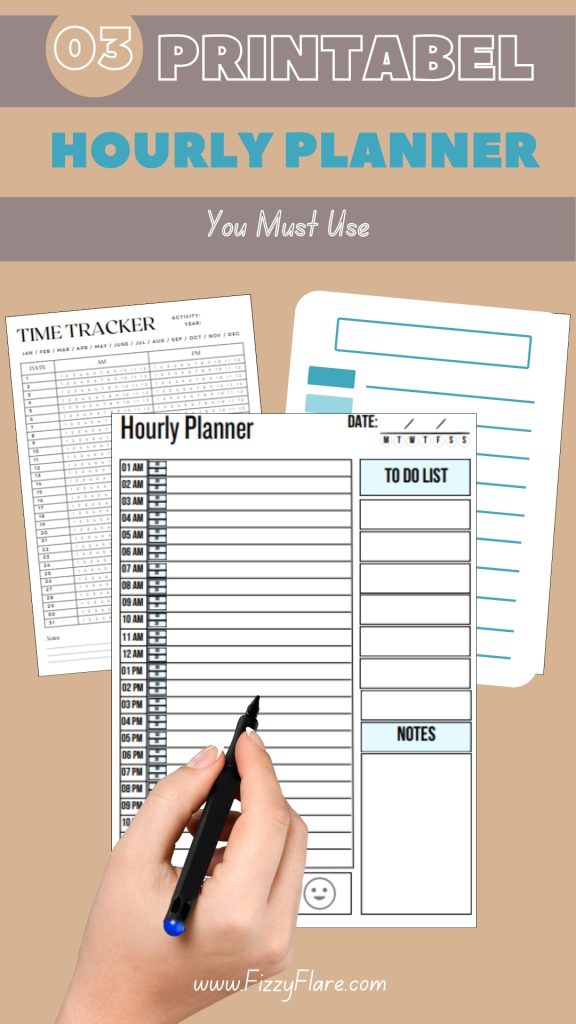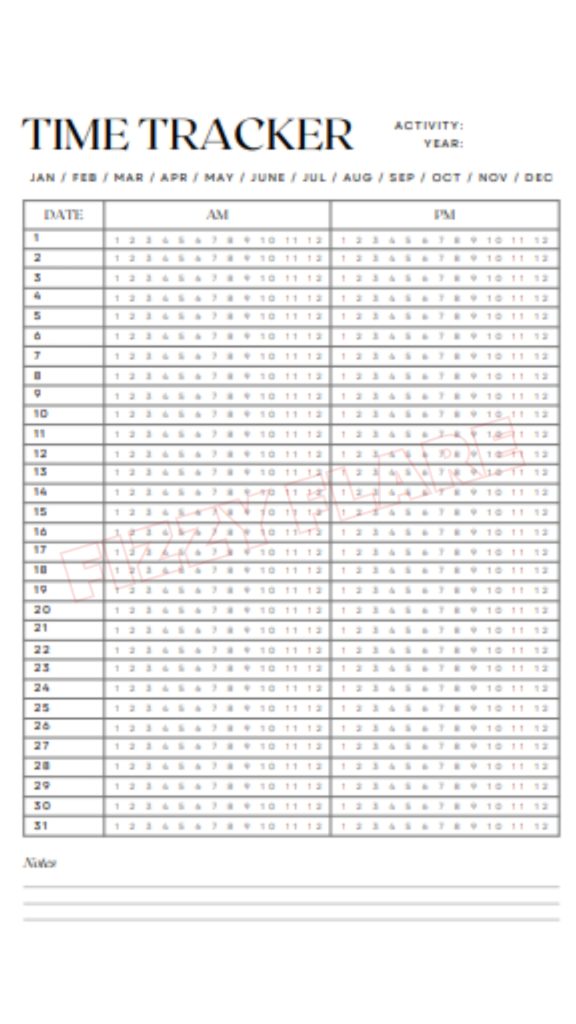Hourly Planner for Effective Planning in 2025


An hourly planner is a simple yet powerful tool to help you organize your day. It allows you to break down your tasks by the hour, making it easier to manage your time and stay on track.
You can see at a glance what needs to be done and when, ensuring nothing slips through the cracks; with clear slots for each hour of the day.
Let’s explore more!
Contents
Time Tracker One

This hourly planner is designed with simplicity and efficiency in mind. Its clean, minimalist layout ensures that users can easily keep track of their activities throughout the year without feeling overwhelmed by unnecessary details.
The top section of the page allows users to specify the year they are tracking, making the planner relevant regardless of the date.
This feature ensures that the planner remains a useful tool year after year. Beneath this, there is a designated area for noting down specific activities.
The main body of the Time Tracker is divided into hourly blocks, from 1 AM to 12 PM. This detailed breakdown is particularly useful for individuals who need to account for every hour of their day, ensuring that no time is wasted.
Each hourly slot provides ample space to write down activities, making it easier to visualize the day’s schedule at a glance.
There is also a notes section at the bottom of the page, offering flexibility for additional information, reflections, or reminders that do not fit into the hourly slots.
Features:
– Year indicator for tracking activities.
– Activity section for noting specific tasks.
– Hourly blocks from 1 AM to 12 PM.
– Notes section for additional information.
Hourly Planner Two

This Hourly Planner offers a more detailed approach to daily planning, suitable for individuals who require precise time management. This page is divided into hourly blocks from 1 AM to 12 PM, similar to the Time Tracker, but it includes additional features that enhance its functionality.
One of the standout features of this page is the to-do list section. This allows users to list their daily tasks, helping them keep track of their responsibilities and ensuring that nothing is forgotten.
Adjacent to this is a notes section, which provides space for additional thoughts, reflections, or reminders.
An interesting addition to the Hourly Planner page is the mood tracker. This feature enables users to monitor their emotional well-being throughout the week, offering insights into their mental health patterns.
Furthermore, the weekly overview section (MTWTFSS) at the top of the page provides a snapshot of the entire week.
Features:
– Hourly blocks from 1 AM to 12 PM for detailed daily planning.
– To-do list section for tracking daily tasks.
– Notes section for additional information.
– Mood tracker for monitoring emotional well-being.
– Weekly overview section for long-term planning.
How to Use an Hourly Planner?
Step 1 – Set Up Your Planner
At the top of the planner, you should write the date for which you are planning. On the other hand, determine the time frame you want to plan. Most planners cover from 6 AM to 10 PM, but adjust according to your schedule.
Step 2 – Identify Key Activities
You can also use the ‘To Do List’ section to jot down all the important tasks or activities you need to complete for the day. Highlight or mark the most critical tasks that need immediate attention.
Step 3 – Schedule Your Day
Assign specific time slots to each task. For instance, if you have a meeting from 10 AM to 11 AM, block that time on your planner. Ensure you allocate a realistic amount of time for each task to avoid over-scheduling.
Step 4 – Include Breaks and Buffer Time
Schedule short breaks between tasks to rest and recharge. Add buffer time between activities to account for any unexpected delays or additional tasks.
Step 5 – Review and Adjust
At the start of the day, review your planner to ensure you are clear about your schedule and priorities. Throughout the day, make adjustments to your schedule as necessary. If a task takes longer than expected, shift less critical tasks to later or to the next day.
Step 6 – Use Notes Section
Use the notes section to jot down any progress, observations, or adjustments needed for future planning. At the end of the day, reflect on what you accomplished, what you didn’t, and why. This can help you improve your planning skills over time.

Fasial is the founder of the Fizzy Flare. He has been a passionate blogger since 2021. He ran three different websites in the past few years. Now he is focusing on Fizzy Flare to build an audience and help them organize their life.
